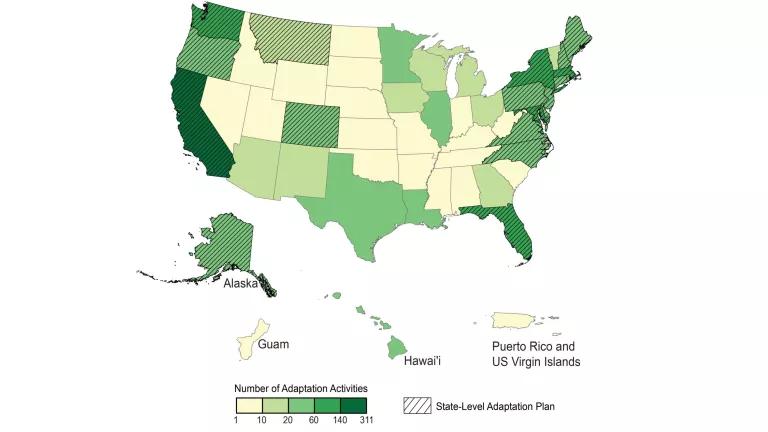Clearing the Air: How Indian Cities Are Fighting Pollution

Co-authored by Polash Mukerjee
Leaders from around the world are gathering at this week’s World Sustainable Development Summit (WSDS) in Delhi, India to help accelerate action on the climate crisis and strengthen community resilience.
January 2020 also marks one year since the launch of India’s National Clean Air Programme (NCAP), a comprehensive effort to tackle the country’s chronic air pollution problems. Because air quality problems in India are often driven by pollution from the same fossil fuels that accelerate climate change, actions to reduce harmful emissions at their sources can achieve major wins for public health in the near-term and long-term, for the environment, and for India’s economy.
A year in, what progress has been made to address India’s air pollution challenges? At a WSDS thematic session, “Multi-Level Actions to Strengthen National Clean Air Plan,” on 29th January, NRDC’s President Emerita Frances Beinecke today launched a new report, Clearing The Air: A Review of 10 City Plans to Fight Air Pollution in India, that details substantial local progress on air pollution reduction efforts and maps out priority strategies for cities to better protect their residents in the years ahead.
Left to Right: Dr. Anju Goel, The Energy and Resources Institute; Dr. Ashok Ghosh, Chairman, Bihar State Pollution Control Board; Ms. Frances Beinecke, President Emerita, NRDC; Dr. Prashant Gargava, Member Secretary, Central Pollution Control Board; Ms. Priya Shankar, India Director, Bloomberg Philanthropies; Dr. M. Sudheendra Rao, Chairman, Karnataka State Pollution Control Board (Credit: NRDC).

Issue Brief: Clearing the Air: A Review of 10 City Plans to Fight Air Pollution in India
Under the NCAP, 122 of India’s cities that do not meet its clean air standards have prepared local Clean Air Plans (CAPs) for reducing particulate matter levels by 20-30 percent by the year 2024. These 122 non-attainment cities include megacities such as Mumbai and Delhi with populations of more than 15 million each, as well as state capitals and smaller cities and towns. Local, state, and central government leaders are collaborating with civil society and academic partners to enact policies that will achieve cleaner, healthier air for India’s people.
New Analysis of City Actions
Are these plans working? To answer that question, NRDC and our local partners reviewed 92 of the publicly-available CAPs, and analyzed those for ten large cities, representing a population of 80.05 million, in detail. Those ten cities are: Ahmedabad, Hyderabad, Kanpur, Kolkata, Mumbai, Nagpur, New Delhi, Patna, Pune, and Surat:

Each city’s CAP describes both ongoing and planned strategies to cut air pollution from specific sectors. Our issue brief focuses on actions aimed at reducing deadly particulate matter emissions from three key sectors: transportation, construction and demolition, and stationary sources (power plants and industrial operations).

Priority Actions and Lessons Learned
Our analysis identifies a common set of priority mitigation measures aimed at reducing emissions from key emission sources. We also highlight common strategies for achieving pollution reduction goals, and present ways to further strengthen city efforts. For example,
- While all CAPs include action points to remove older vehicles which adhere to older, less stringent emission standards, there is a lack of uniformity in criteria for defining “older” vehicles.
- Most CAPs do not contain any action points to address emissions from power plants located in in the city limits/local airsheds. Only two cities, Mumbai and Delhi, directly address emissions from power plants
- All the CAPs we analyzed contain action points that address emissions arising from garbage burning in landfill sites. However, the inherent flaws of dumping unsegregated waste in landfill sites is not addressed by most CAPs. There is a need to overhaul city level solid waste management practices to ensure source segregation for maximized recycling and processing.
This issue brief also discusses some of the lessons learned from NRDC’s experience in international environmental policy, and outlines policy strategies to consider for reducing air pollution in India. These points include:
- A need to strengthen regulatory frameworks for air pollution management to adequately protect public health.
- Opportunities to enhance enforcement mechanisms and advance transparent compliance guidelines for private industry.
- Multiple benefits of improving the systematic collection of air pollution and health data to guide public policy.
NRDC’s ongoing work with municipal corporations in Ahmedabad and Pune to strengthen local air pollution knowledge, capacity, and solutions benefits from lessons learned and expertise in other cities and states contending with similarly complex challenges. As our analysis shows, in India’s fight against dangerous air pollution, strong leadership and ambitious actions at the local level can help to deliver transformative and lasting improvements for public health.




